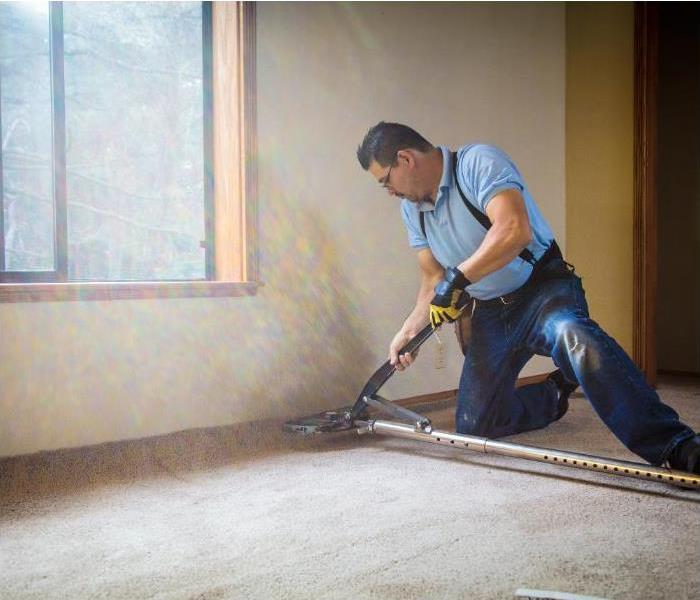Acting Quickly After Water Damage to Prevent Mold: Essential Tips for West Valley City, UT
9/25/2024 (Permalink)
Water damage can be a homeowner's worst nightmare. Whether it's due to a burst pipe, heavy rainfall, or an overflowing appliance, the aftermath of water damage can be extensive and costly. One of the most concerning secondary issues that can arise from water damage is mold growth. Mold thrives in damp environments, making homes that have suffered water damage particularly vulnerable. In West Valley City, UT, where weather conditions can sometimes be unpredictable, it's crucial to understand how acting quickly can prevent further damage and avoid the need for extensive mold damage restoration.
Understanding the Risks of Mold After Water Damage
Mold spores are present in the air all around us, but they only begin to grow when they find a suitable environment. After water damage, your home becomes a perfect breeding ground for mold due to the increased moisture levels. Mold can start growing within 24 to 48 hours of water exposure. Once it starts, it can spread rapidly, leading to significant structural damage.
The Importance of Immediate Action
The key to preventing mold growth after water damage is to act quickly. Here's a step-by-step guide on what to do immediately after experiencing water damage:
1. Ensure Safety First
Before doing anything, ensure that it's safe to enter the affected area. Turn off the electricity to prevent the risk of electrical shock and avoid using electrical appliances or devices in the vicinity of water damage. If the water damage is extensive, consider evacuating the area until professionals can assess the situation.
2. Stop the Source of Water
Identify and stop the source of the water as soon as possible. If it's a burst pipe, turn off the main water supply to your home. For roof leaks, consider using a temporary tarp to cover the damaged area until repairs can be made. Stopping the source of water is crucial to prevent further damage and reduce the potential for mold growth.
3. Remove Standing Water
The next step is to remove any standing water. Use a wet/dry vacuum, mop, or towels to soak up as much water as possible. The quicker you can remove the water, the lower the risk of mold development. If the water is extensive, you may need to contact a professional water damage restoration service to handle the cleanup effectively.
4. Dry Out the Affected Area
Once the standing water has been removed, it's essential to dry out the affected area thoroughly. Use fans, dehumidifiers, and open windows to increase airflow and reduce moisture levels. The goal is to get everything as dry as possible within 24 to 48 hours. This step is critical because even small amounts of moisture can contribute to mold growth.
5. Inspect and Remove Damaged Materials
Inspect the area for any materials that have been damaged beyond repair. This may include drywall, insulation, and carpeting. These materials can retain moisture and become moldy if not removed promptly. Dispose of any materials that are too damaged to salvage, and ensure that any remaining items are thoroughly dried before reinstallation.
6. Clean and Disinfect
After the area is dry, clean and disinfect all surfaces that were affected by water. Use a mixture of water and detergent to scrub surfaces, followed by a disinfectant to kill any remaining bacteria and prevent mold growth. Pay special attention to areas that are prone to mold, such as corners, under cabinets, and around windows.
7. Monitor for Mold Growth
Even after taking these steps, it's important to keep an eye on the affected area for any signs of mold growth. Look for discoloration, a musty smell, or any visible mold patches. If you notice any of these signs, it’s crucial to address them immediately to prevent further spread.
When to Call a Professional
While many homeowners can handle minor water damage issues on their own, more extensive damage or persistent moisture problems may require professional assistance. Mold damage restoration experts in West Valley City, UT, can provide specialized equipment and expertise to handle severe water damage and mold infestations. They can perform a thorough inspection, use advanced drying techniques, and ensure that all mold is effectively removed and prevented.
Preventing Future Water Damage
Once you've addressed the immediate damage, it's essential to take steps to prevent future water damage. Regular maintenance of your home's plumbing system, roof, and gutters can help reduce the risk of water damage. Additionally, installing a sump pump or dehumidifier can provide added protection against water-related issues.
In West Valley City, UT, where weather patterns can sometimes lead to unexpected water damage, staying proactive about home maintenance and water damage prevention can save you from costly repairs and health issues down the line. By acting quickly and following these steps, you can mitigate the risks of mold damage and ensure that your home remains safe and dry.
Water damage can be overwhelming, but prompt action can make all the difference in preventing further issues like mold growth. By stopping the source of water, removing standing water, drying out the area, and inspecting for damage, you can significantly reduce the risk of mold and protect your home from further harm. In West Valley City, UT, where local conditions may contribute to water-related problems, being vigilant and prepared is key to maintaining a safe and healthy living environment. If you're facing severe water damage, don't hesitate to contact a professional mold damage restoration service to ensure that your home is properly restored and protected.






 24/7 Emergency Service
24/7 Emergency Service
